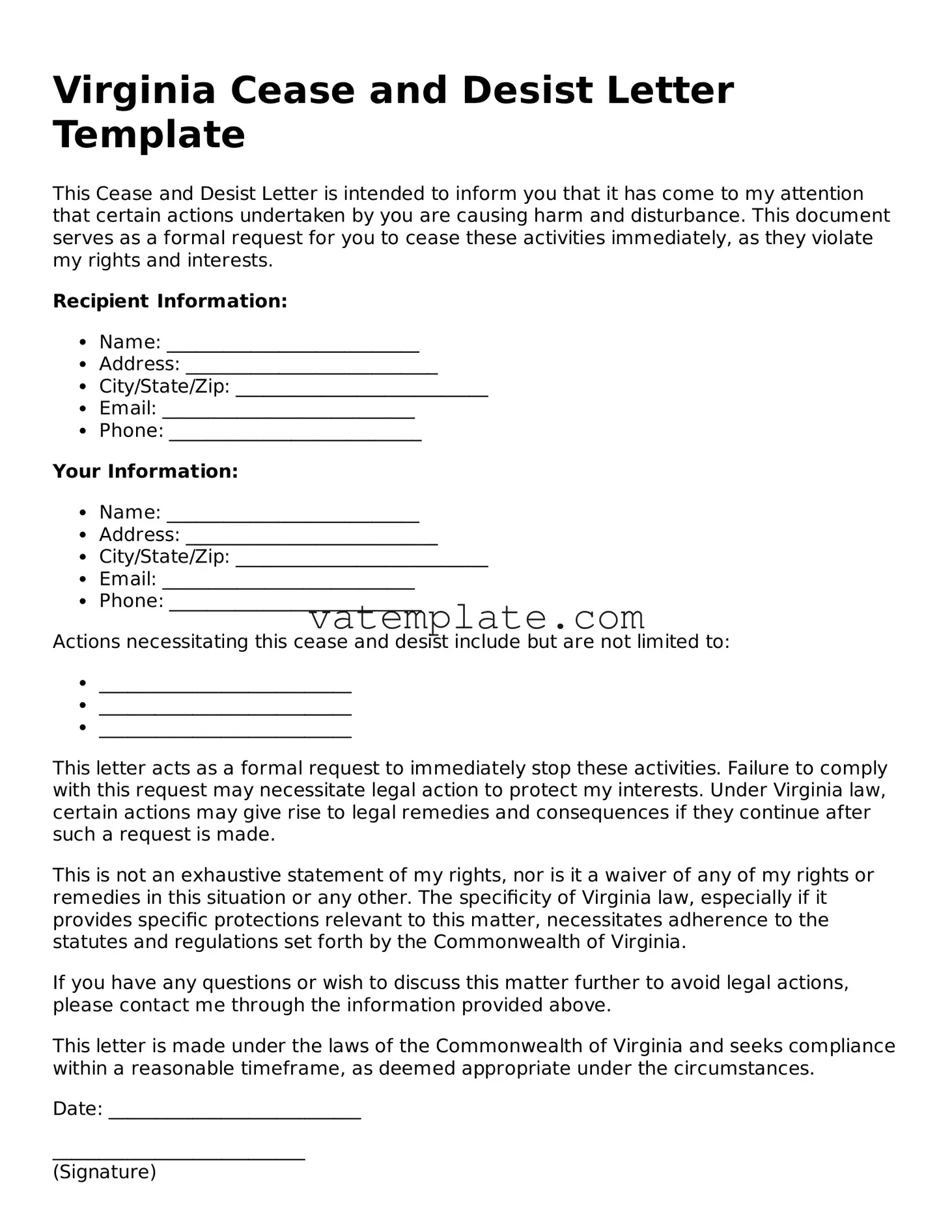Virginia Cease and Desist Letter Template
This Cease and Desist Letter is intended to inform you that it has come to my attention that certain actions undertaken by you are causing harm and disturbance. This document serves as a formal request for you to cease these activities immediately, as they violate my rights and interests.
Recipient Information:
- Name: ___________________________
- Address: ___________________________
- City/State/Zip: ___________________________
- Email: ___________________________
- Phone: ___________________________
Your Information:
- Name: ___________________________
- Address: ___________________________
- City/State/Zip: ___________________________
- Email: ___________________________
- Phone: ___________________________
Actions necessitating this cease and desist include but are not limited to:
- ___________________________
- ___________________________
- ___________________________
This letter acts as a formal request to immediately stop these activities. Failure to comply with this request may necessitate legal action to protect my interests. Under Virginia law, certain actions may give rise to legal remedies and consequences if they continue after such a request is made.
This is not an exhaustive statement of my rights, nor is it a waiver of any of my rights or remedies in this situation or any other. The specificity of Virginia law, especially if it provides specific protections relevant to this matter, necessitates adherence to the statutes and regulations set forth by the Commonwealth of Virginia.
If you have any questions or wish to discuss this matter further to avoid legal actions, please contact me through the information provided above.
This letter is made under the laws of the Commonwealth of Virginia and seeks compliance within a reasonable timeframe, as deemed appropriate under the circumstances.
Date: ___________________________
___________________________
(Signature)
___________________________
(Print Name)
